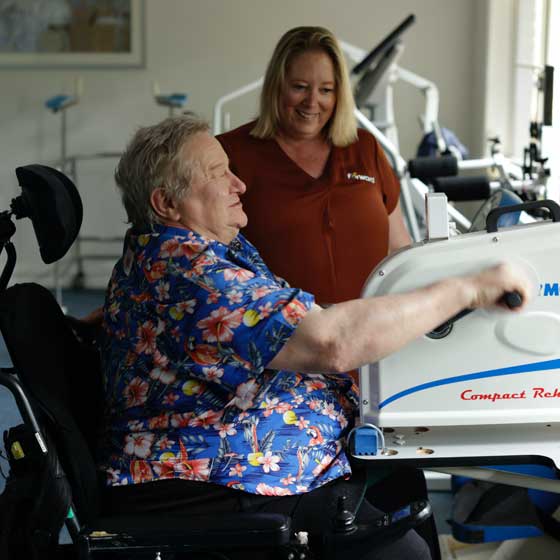About Spinal Cord Injury
Spinal Cord Injury can happen to anyone at any time and the impact on your life, along with your loved ones, can be immense. Below you’ll find a range of helpful information to help you understand more about, and living with, spinal cord injury.
About SCI
The spinal cord is an extension of the brain and runs from the neck to the lower back. Many people are surprised that it has the consistency of toothpaste. The spinal cord is surrounded and protected by the bony spinal column (the spine) and consists of millions of nerve fibres that transmit information to and from the limbs, trunk and organs of the body.
Spinal cord injury occurs if pressure is applied to the spinal cord, and/or the blood and oxygen supply to the cord is disrupted. This means that part of the spinal cord dies.
The major causes of traumatic spinal cord injury are traffic-related accidents (motor vehicles and motor cycles), falls, diving and sports-related accidents.

There are two main types of spinal cord injury, depending on where damage to the spinal cord occurs.
Quadriplegia
Quadriplegia (tetraplegia) is the partial or complete paralysis of the upper and lower portion of the body, including legs, trunk, arms and hands. Quadriplegia is a neck injury.
Paraplegia
Paraplegia is the partial or complete paralysis of the lower portion of the body, including the legs and, in many cases, some or all of the trunk. Paraplegia is a back injury.
Facts and Figures
Approximately 15,000 Australians live with spinal cord injury. 350 to 400 new cases are recorded each year. Most spinal cord injuries are permanent and life changing.
- 52% are caused by transport-related accidents
- 28% are caused by falls
- 10% by recreational activities and sports like rugby, surfing and diving
- Men account for 83% of spinal cord injuries
- Most common age group to have a spinal cord injury is 15 – 24 year olds (25%)
- Paraplegia represents 48% of spinal cord injuries, with 52% resulting in tetraplegia
- Estimates indicate the lifetime cost for each case of paraplegia is about $5 million and that for quadriplegia, is about $9.5 million. Generally, 40% of these costs will be borne by the individual.
Source: AIHW: Tovell A 2020. Spinal cord injury, Australia, 2016-17. Injury research and statistics series no. 129. Cat. no. INJCAT 209. Canberra:AIHW.
Organisations & Research
Spinal Cord Injury organisations – Australia
- Australian Spinal Injury Alliance
The Alliance represents eight of Australia’s state-based spinal cord injury organisations. Find your local SCI organisation here
Spinal Cord Injury organisations – Global
- Paralyzed Veterans of America
Spinal cord injury facts and information, research, tips, tools, resources - Spinal Injuries Association (UK)
Information on SCI from the leading UK user-led spinal cord injuries charity, with an online learning portal - United Spinal Association (USA)
Membership-based organisation providing information, online resources and support
Spinal Cord Injury research
- SpinalCure Australia
Australia’s leading national not-for-profit for the advocacy and funding of spinal cord injury research - Spinal Network
Supporting Australian clinical research, maintaining a directory of services, fact sheets, resources and community information - Flinders University for Injury Studies
Undertakes research , consultation and teaching into the nature, causes and effects of injury (spinal and other) - University of Washington
Information on current research, including chronic pain and wellness in older adults - Spinal Cord Research Centre
Spinal cord injury research laboratories of the University of Mannitoba, Canada
Got a question?
Talk to us for more information about our services and how we can help you.